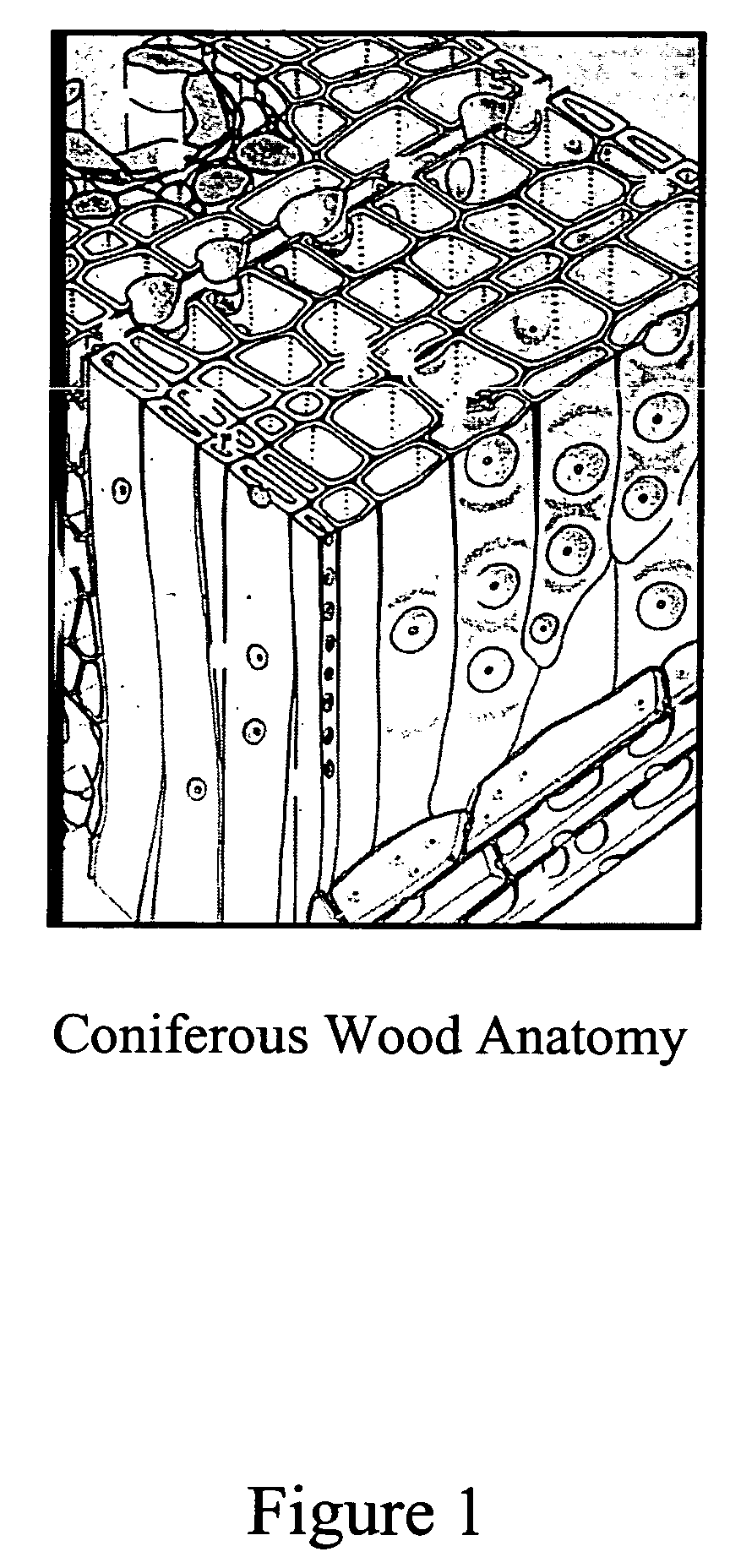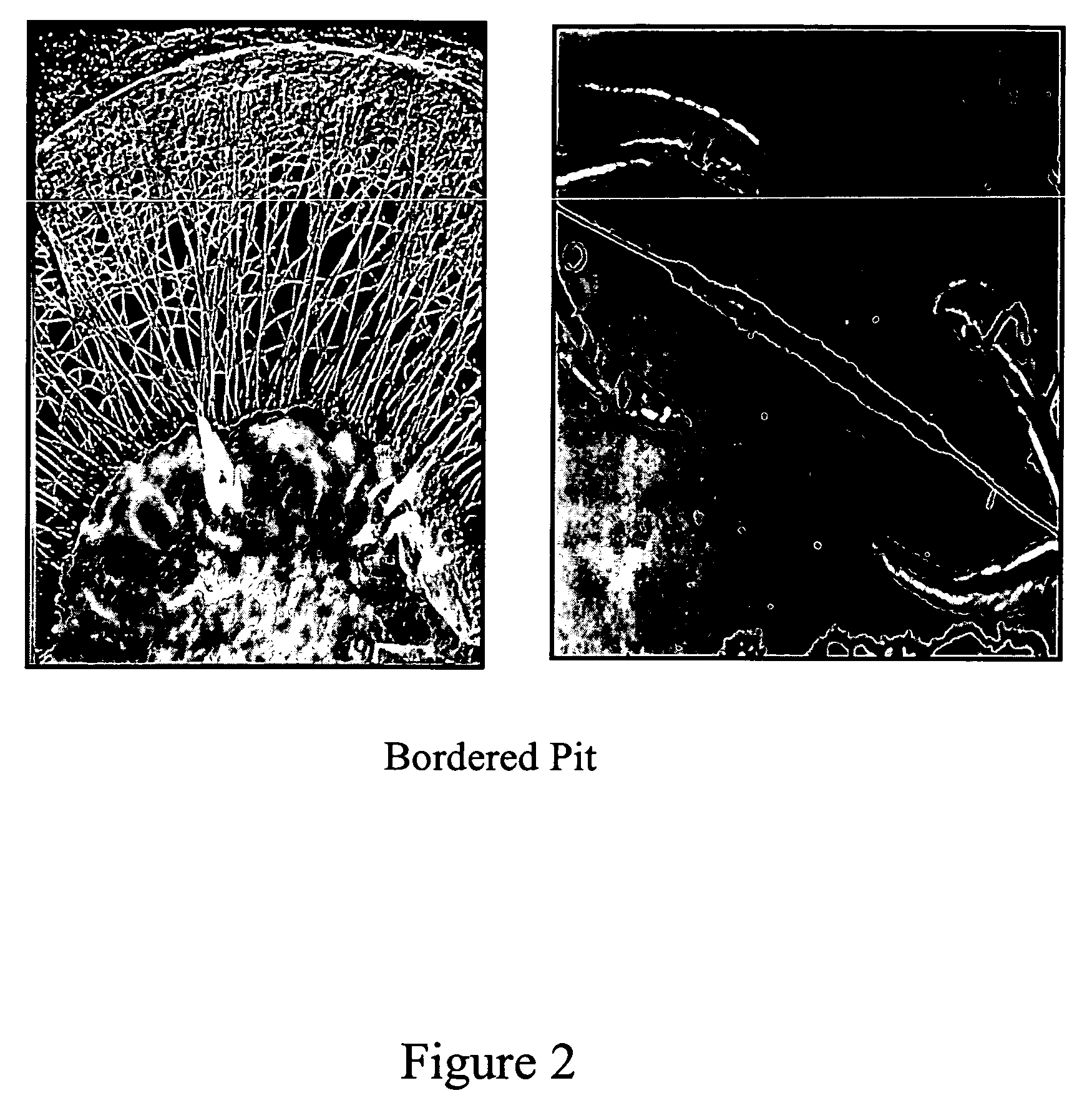Micronized wood preservative formulations in organic carriers
a preservative and organic carrier technology, applied in the field of wood preservation, can solve the problems of difficult preparation of solutions, inability to achieve many desirable combinations of inorganic/organic components and organic solvents, and limited solubility of compounds and organic biocides. the effect of low solubility
- Summary
- Abstract
- Description
- Claims
- Application Information
AI Technical Summary
Benefits of technology
Problems solved by technology
Method used
Image
Examples
example 1
[0048] This example demonstrates the preparation of a dispersion of a micronized metal compound according to the present invention. Five hundred (500.0) grams of copper hydroxide were added to a container containing 1091.7 grams white mineral spirits and 125.0 grams of dispersants / wetting agents. The mixture was mechanically stirred for 5 minutes and then placed in a grinding mill. The sample was ground for about 30 minutes, and a stable dispersion containing about 30 wt % copper hydroxide was obtained with an average particle size of 0.195 micrometers.
example 2
[0049] This example demonstrates the preparation of a dispersion of a micronized metal compound according to the present invention. One thousand (1000.0) grams of basic copper carbonate was mixed with 2158.3 grams of #2 fuel oil and 175.0 grams of wetting agents / dispersants. The mixture was mechanically stirred for 10 minutes. The mixture was then placed in a grinding mill and ground for about 20 minutes. A stable dispersion was obtained with an average particle size of 0.199 micrometers.
example 3
[0050] This example demonstrates the preparation of a dispersion containing a micronized metal compound and a micronized organic biocide according to the present invention. One thousand (1000.0) grams of basic copper hydroxide and 20 grams of tebuconazole were mixed with 3780 grams of mineral spirits and 200 grams of wetting agents / dispersants. The mixture was mechanically stirred for about 10 minutes. The mixture was then placed in a grinding mill and ground for about 30 minutes. A stable dispersion containing 25 wt % basic copper carbonate and 0.5wt % tebuconazole was obtained with an average particle size of 0.200 micrometers.
PUM
| Property | Measurement | Unit |
|---|---|---|
| Size | aaaaa | aaaaa |
| Size | aaaaa | aaaaa |
| Size | aaaaa | aaaaa |
Abstract
Description
Claims
Application Information
 Login to View More
Login to View More - R&D
- Intellectual Property
- Life Sciences
- Materials
- Tech Scout
- Unparalleled Data Quality
- Higher Quality Content
- 60% Fewer Hallucinations
Browse by: Latest US Patents, China's latest patents, Technical Efficacy Thesaurus, Application Domain, Technology Topic, Popular Technical Reports.
© 2025 PatSnap. All rights reserved.Legal|Privacy policy|Modern Slavery Act Transparency Statement|Sitemap|About US| Contact US: help@patsnap.com


